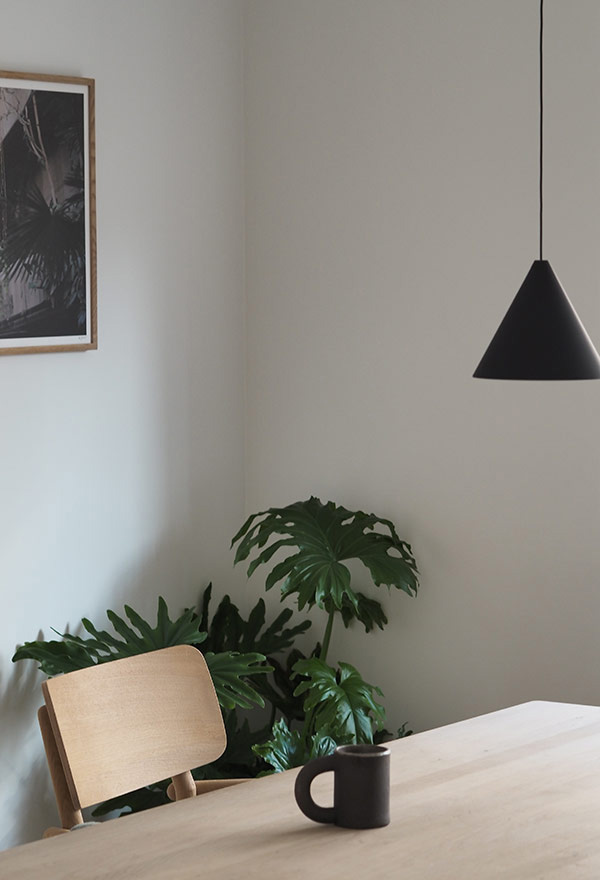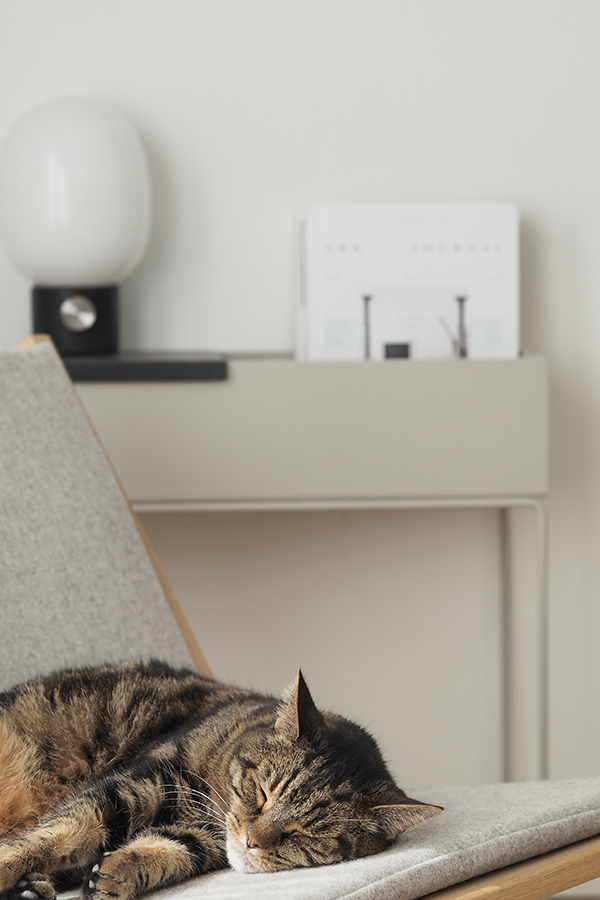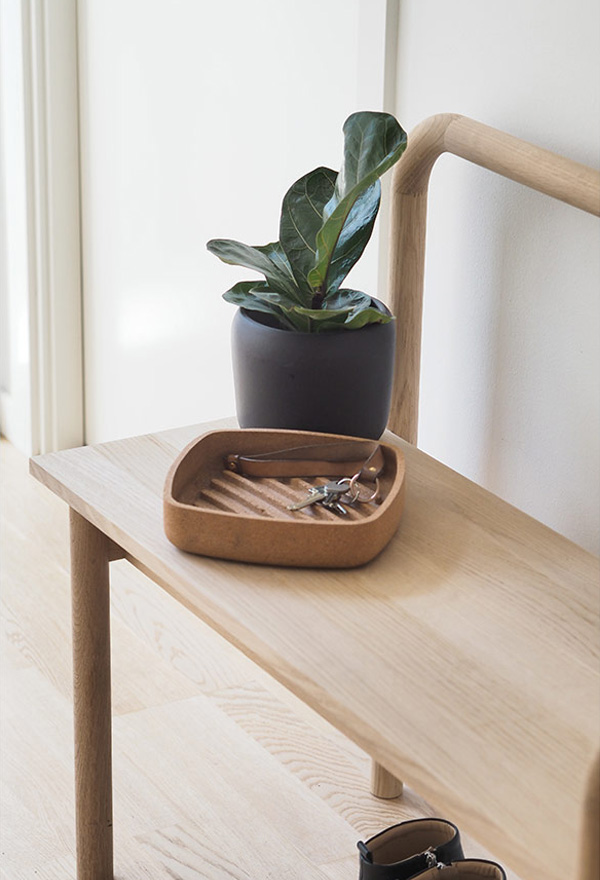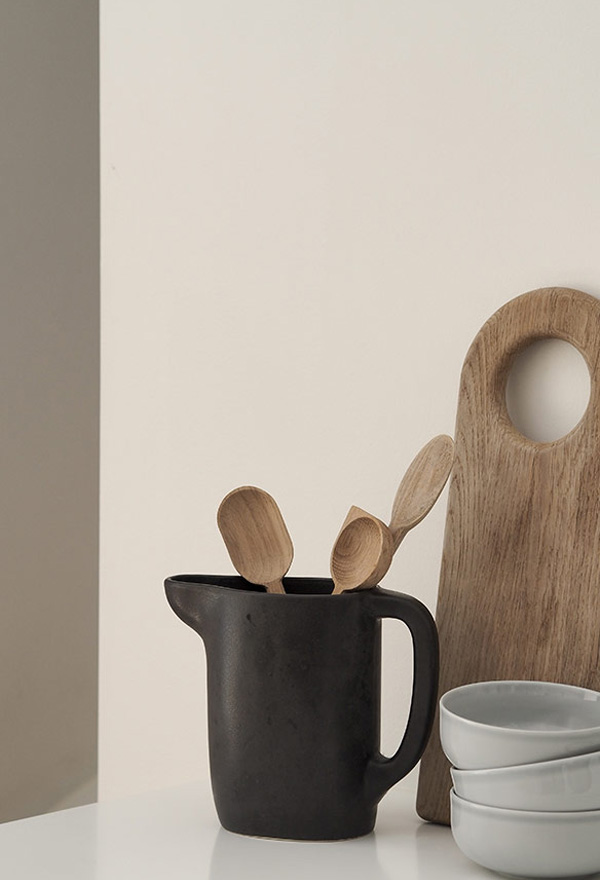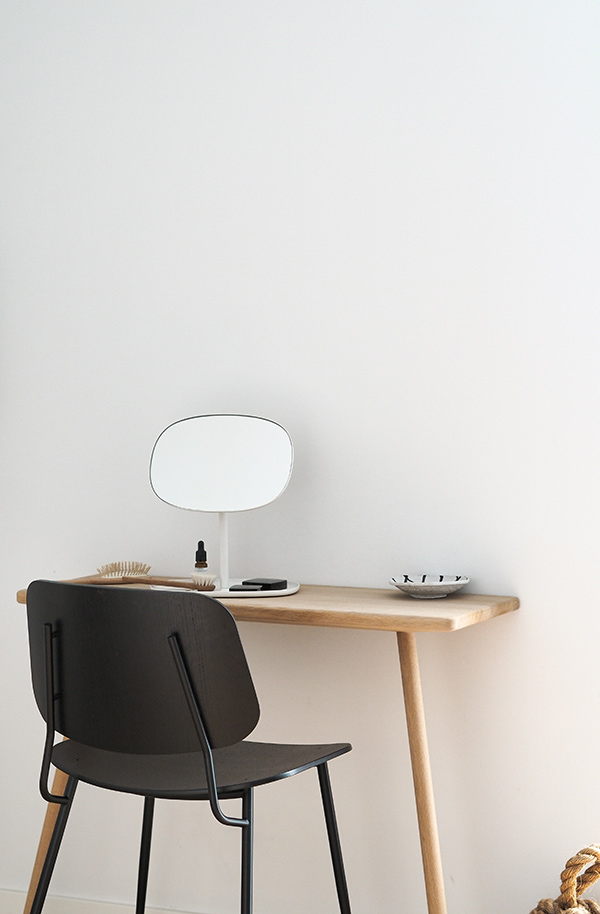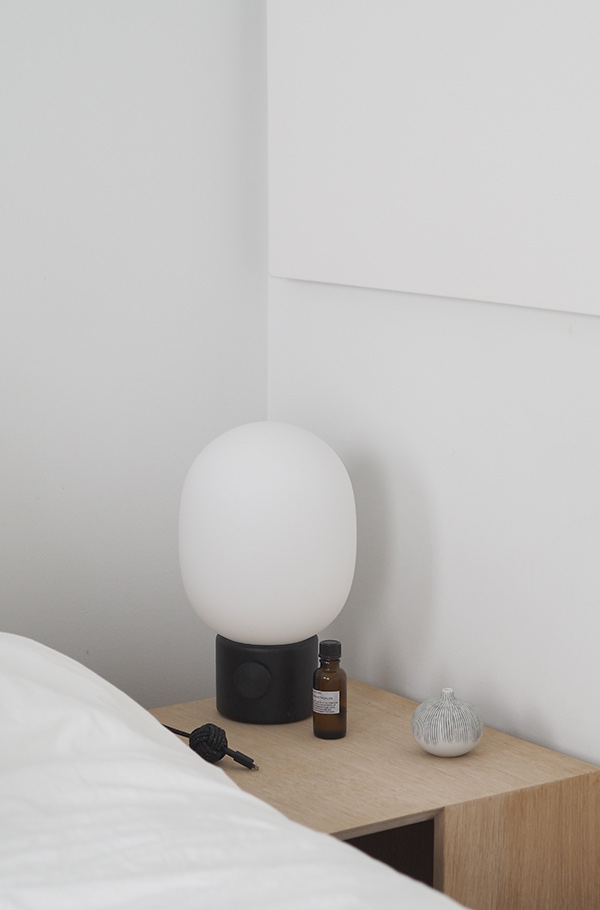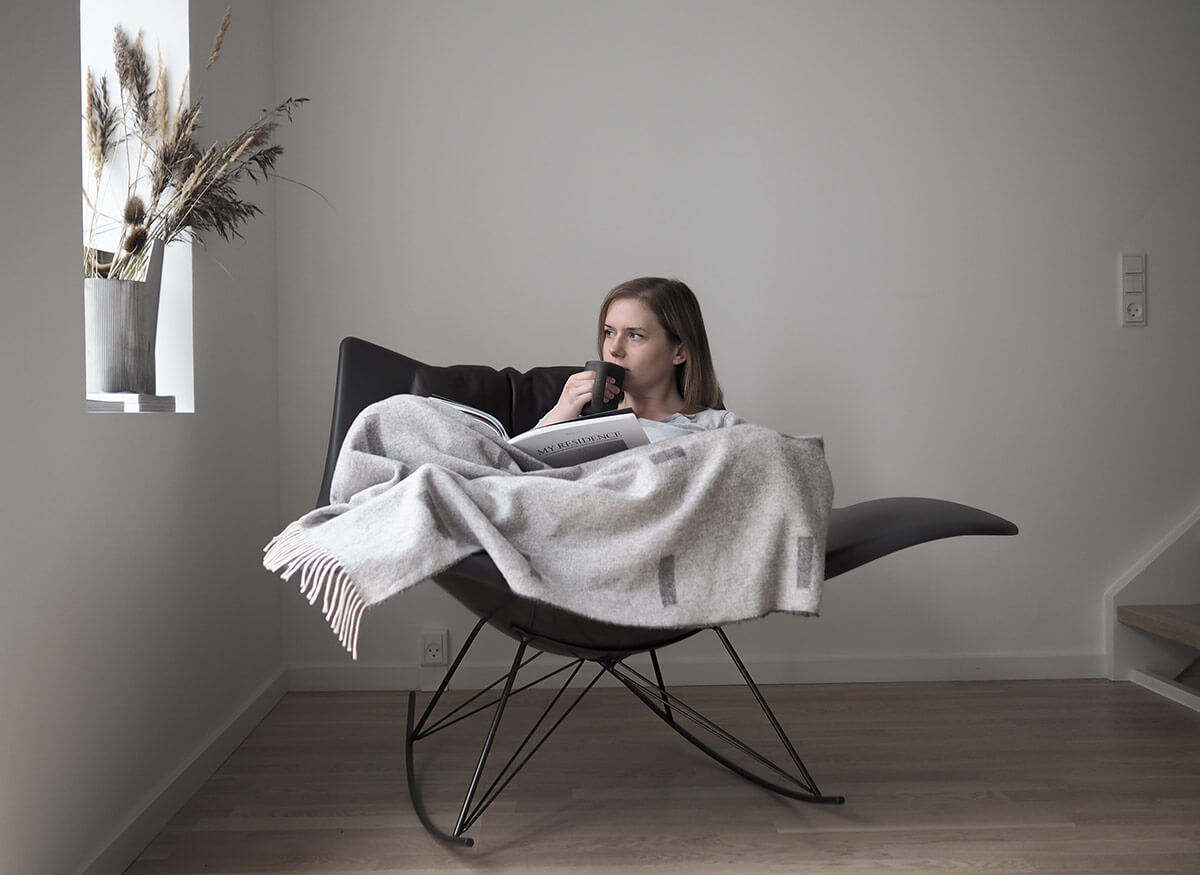
Inside your homes: Hannah Trickett
We take a look inside the minimal home of Copenhagen based interior stylist Hannah Trickett, talk spaces for wellbeing and get some insider tips for the Danish capital.
With a self-confessed healthy obsession for minimalism and simplicity, Hannah Trickett’s Copenhagen home is a haven of calm. An interior stylist by trade, Hannah is half British and half Danish with a love for Scandinavian design and culture.
Living with a long-term health condition, hydrocephalus - we talk to Hannah about the importance of creating a home that helps to look after you. Take a read.
Could you start off by telling us a bit about your journey to becoming an interior stylist and starting your interiors blog - Hannah Trickett?
Back in 2004, I started my career in London as an interior designer. I designed for luxury residential homes in and around London. It was an amazing experience and a great learning opportunity.
Unfortunately, in 2010 I became ill from a childhood illness, hydrocephalus, that I live with and is controlled (to a point). I had multiple brain surgeries and while recovering I set up my blog to be my creative outlet.
My health was at that point so unpredictable that I couldn't inform my employer when I’d be back and in truth, the number of surgeries I had put a massive strain on my body that I wasn’t comfortable taking on that kind of work.
So, I continued with sharing my design passions online (including blogging while I was in the hospital) and that developed into a new career.
I’m not completely housebound and I do travel, attend events and have meetings in the city. I’ve combined writing about interior design, consulting, styling parts of my home and a few other projects too. Thankfully it’s a career where my home is my base and resting is part of the job.
Has living with hydrocephalus affected the way you treat your home?
Hydrocephalus has certainly changed the way I live. Or better put, having multiple brain operations has changed the way I live. I’m poorly most days with pain, nerve damage, fatigue and headaches. So, having a restful home became a priority.
I try to keep my home clear of any visual chaos but I’m a messy person so it’s constant work. Even though my home needs to be calm it must also excite me in terms of design. I need to be visually stimulated otherwise I’d go stir crazy.
Since becoming ill in 2010 my colour palette for the home and fashion has become quite muted with a few monochrome accents. I sometimes get sensory overload and it both causes stress and episodes of illness. So, this is when I turned to minimalism. I believe that you can be a minimalist and still have things, it’s more of a state of mind. I have a buy less and choose well attitude. My home is pared back with honest materials, craftsmanship and contemporary design. It’s quite peaceful.
We think it’s really important to create spaces that are positive for your mental and physical health. Have you got any tips for creating a home that helps to look after you?
I totally agree. I have some questions that I use at the beginning of a project or rearranging furniture. It helps the design process and can help you work out how a home can serve you better.
- How do I want this space to function?
- What is it that I dislike about the room currently?
- Are there any triggers that cause stress?
- How can this space serve me better?
- If you do have limitations in any way, what can help you?
From that point, you can start to think more about the design, furniture, colours and materials.
Colour is so important in terms of mental health. There are lots of claims that certain colours make you react in certain ways. I believe that to a point but also listen to yourself. I love natural colours. I may have a muted home, but I do mix in greens and I’m loving blue at the moment. I either introduce them with art, that I alternate around the house or plants.
For furniture and physical health, look to what you need, how many people are using the space etc. Right now, I need to look for lounge chairs with head support. My neck is very weak from past surgeries and I know that in the afternoon it needs support.
Don’t compromise on quality and style just because of an illness, this is when you’re vulnerable, you deserve the best.
You’re now based in Copenhagen, what is it that drew you to the city?
Copenhagen is amazing, there was an instant connection, it was love at first sight. I lived in London for 13 years but with my health not being so great, I found it harder to navigate around and in truth harder to enjoy. But I love London and it was sad to leave.
I’ve visited Copenhagen quite a lot, either for long weekends, business trips and press events. Each time I felt like I was part of a city again and one that wasn’t gruelling. I could cycle around the city safely, visit all of my favourite design stores, relax by the water. It felt liberating. And also exciting to learn more about my heritage and be part of the professional design world again. All of that made the decision a lot easier. And I’m so happy to call Copenhagen my home.
What is it about Scandinavian design that you love?
The simplicity, love for honest materials and craftsmanship. Scandinavian design respects the past and looks to the future. There’s so much thought, care and pride put into the design and production. I find that Scandinavian design is a culture in itself. I’m still learning but it is so fascinating and beautiful.
Achieving a considered, minimal style can sometimes be quite a challenge. Have you got any tips for people looking to create more minimal spaces?
This may be cliché, but I’d recommend that if you want a minimal space start to read Marie Kondo’s “The life-changing magic of tidying up’. I don’t think you have to do it all to the letter. I found that it helps you consider what you currently have and how you value it. It’s also a life changer when it comes to organising.
When you approach buying something consider the lifeline of the product. How long do you expect to have it, the quality of the materials, design and craftsmanship? That will also give an indicator of how long the item will last and can help explain the cost of the item.
Concealed storage is a great option for creating a minimal space. But make sure that you have things that you need easily accessible. The minimal concept is purely subjective, you still have to live in a home, not a gallery. When I style a corner of my home, I take everything away and add items slowly. Don’t be afraid to have things on display. If you read a lot and have tons of books, then be proud to have them out. It’s your home, plan it around the way you live.
What’s your go-to place for inspiration? Are there any people, places or brands that never fail to inspire you?
There’s a multitude of places I look at when it comes to inspiration. Exhibitions are a great inspiration, such as Stockholm design week and 3 Days of Design in Copenhagen (my favourite design week), I’ve not been to Milan yet but it’s on my list.
It’s never hard to get inspired in Copenhagen. I cycle around the city a lot, discovering the architecture, new shops and cafes are often fitted out with Danish design. And I look to nature, you may often see my cycling adventures on Insta stories, through the fields, the city or by the sea.
When it comes to brands, Norm Architects and Lotta Agaton Interiors never disappoint, they are ultra-inspiring with design and styling. I’m also really excited about the environmentally conscious designs and manufacturing by Skagerak by Fritz Hansen.
And finally, Copenhagen is known for being a melting pot of design, architecture and fashion. Have you got any insider tips for people looking to visit the Danish capital?
Firstly, rent a bike. It’s the best way to see the city and doesn’t take long to get from a beautiful beach to the city centre. There’s so much packed in the small city. Jump in the water, it may be cold, but it feels amazing. If it’s your first time, your first point of call should be Torvehallerne food hall, the Round tower, Botanical gardens, and Nyhavn.
Two super relaxing wine bars I love, both by the water, are Nærvær, designed by Norm Architects, close by to Nyhavn and without the crowds. Or for a more humble setting, cycle to La Banchina and drink natural wine with your feet dangling in the water from on their own jetty.
There’s so much to see and it all depends on the time of year. Luckily the Danes don’t let the weather stop them from doing anything. So, there’s always something to do. Even if it’s sitting in a cosy cafe and people watching. If you get on a bike you’ll see so much and if you don’t bike, then get on a boat!
You can see more from Hannah on her Instagram or her blog Hannah Trickett. If you would like more information regarding living with Hydrocephalus, visit the Shine Charity’s website, a fantastic organisation providing information about the condition.
Have you created a minimal home or have any tips to share around creating positive spaces? Share them with us on Instagram, Facebook or Twitter.

